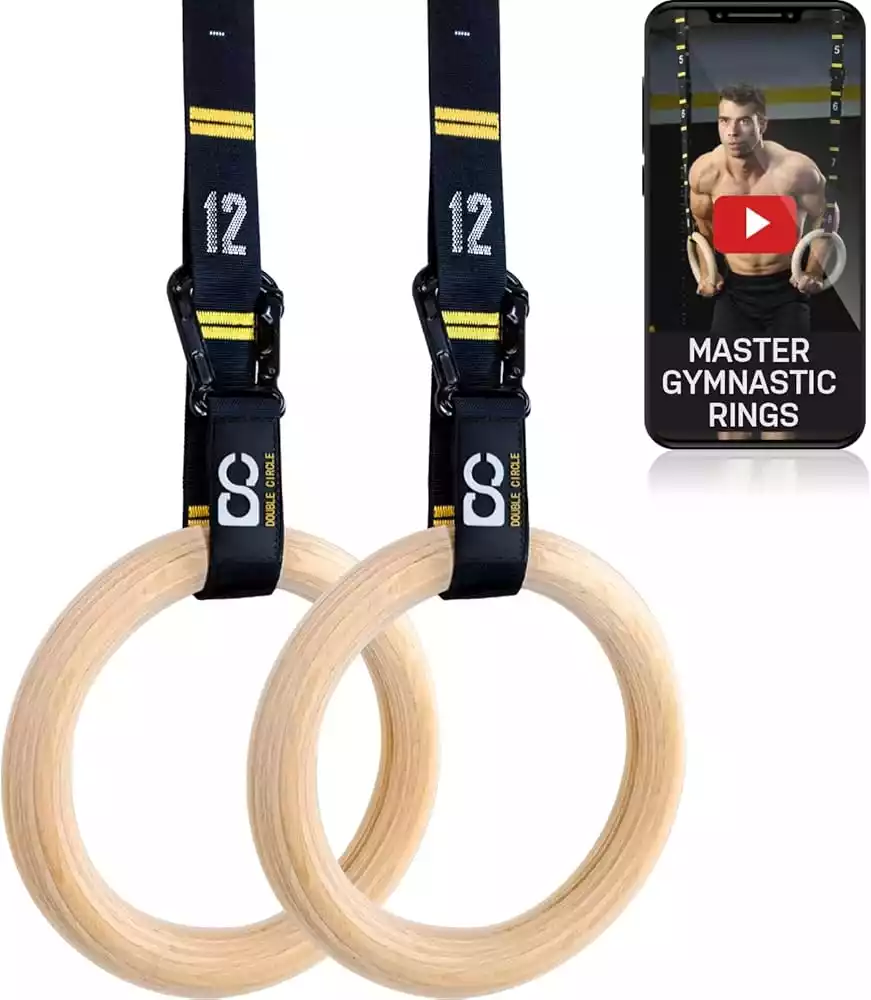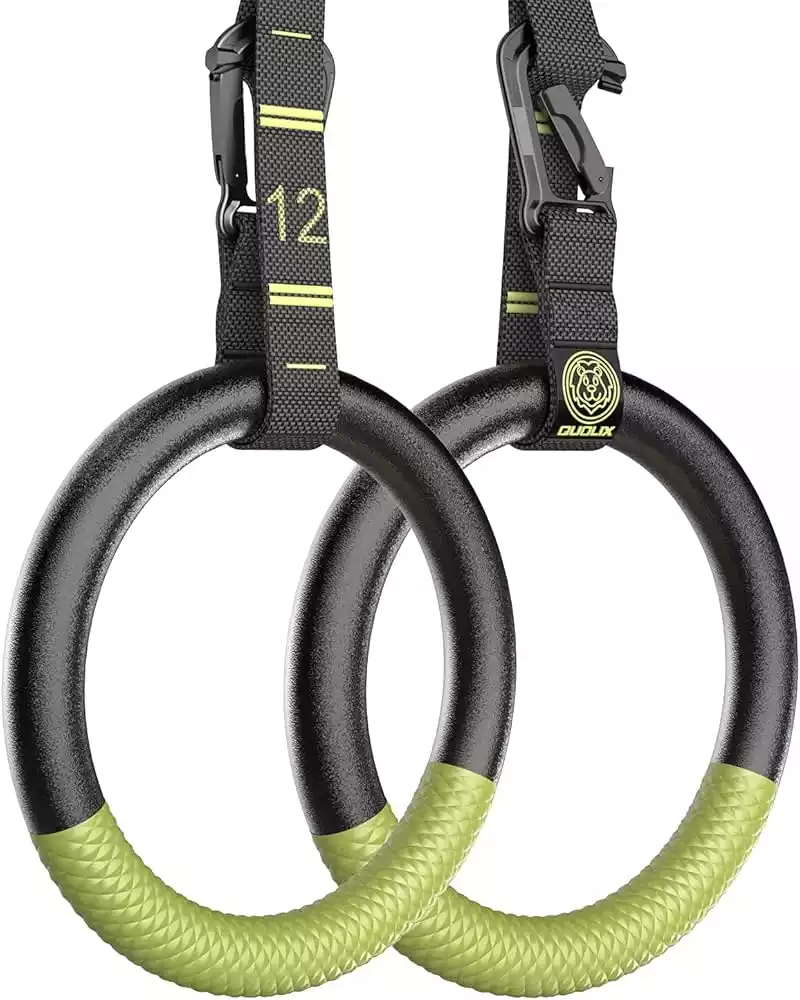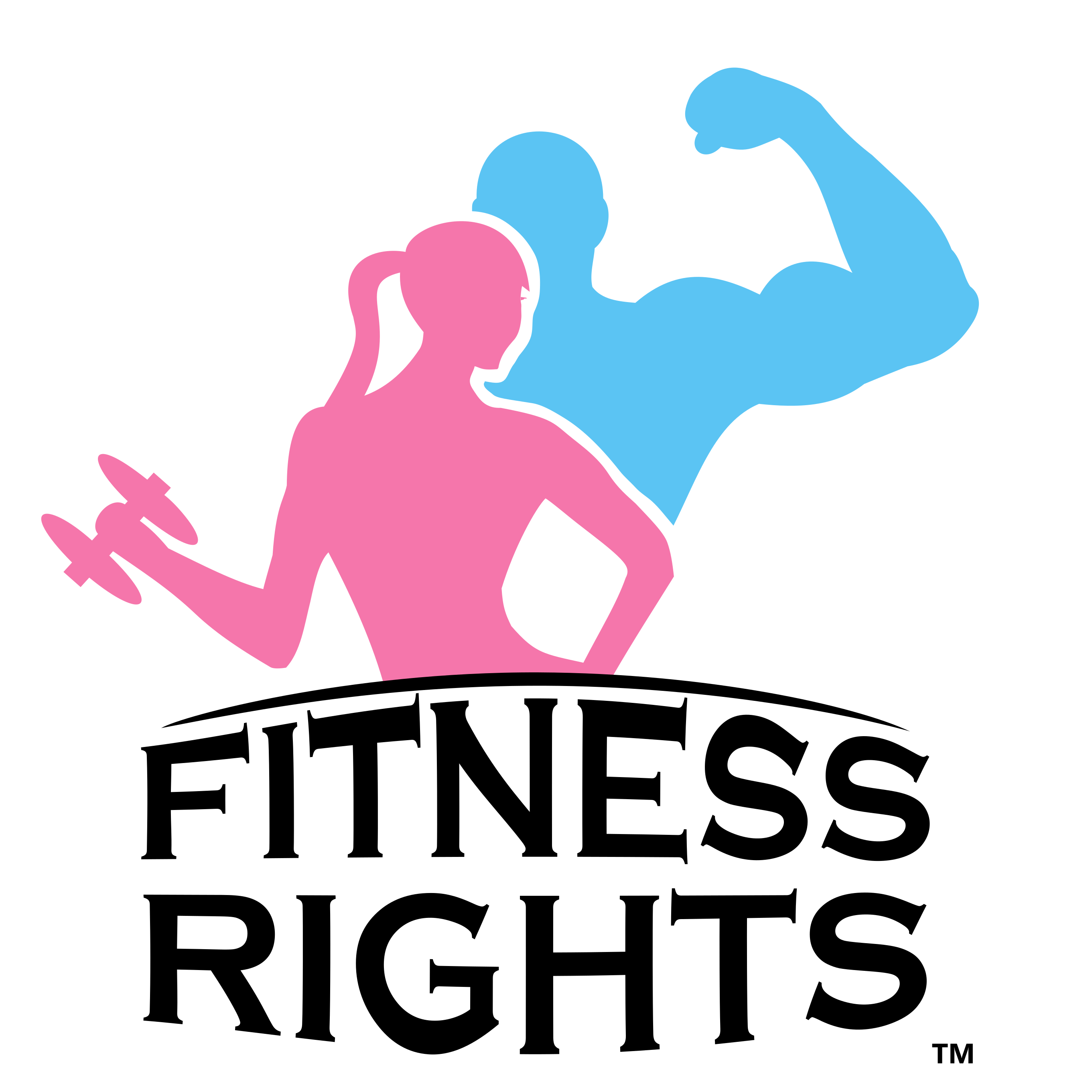Are Gymnastic Rings Worth It?
Gymnastic rings have been a staple in physical training for centuries, dating back to the early 19th century when they were first introduced in gymnastics competitions. These versatile tools offer a unique blend of strength, flexibility, and coordination training that few other pieces of equipment can match.
Versatility in Workouts
One of the standout features of gymnastic rings is their versatility. Unlike traditional weights or machines, rings can be used for a wide range of exercises that target different muscle groups. From push-ups and dips to muscle-ups and levers, the possibilities are nearly endless. This versatility allows for a more comprehensive workout, engaging multiple muscle groups and promoting functional strength.
Key Exercises:
• Push-Ups: Enhance upper body strength and core stability.
• Dips: Target the triceps, chest, and shoulders.
• Muscle-Ups: Combine a pull-up and dip in one fluid motion, working the upper body extensively.
• Levers: Improve core strength and body control.
Building Functional Strength
Functional strength refers to the ability to perform everyday activities with ease and efficiency. Gymnastic rings excel in this area because they require the engagement of stabilizing muscles that are often neglected in traditional weightlifting. This leads to improved balance, coordination, and overall body control.
Benefits of Functional Strength:
• Enhanced Athletic Performance: Better agility, speed, and power.
• Injury Prevention: Stronger stabilizing muscles reduce the risk of injuries.
• Improved Daily Activities: Easier lifting, carrying, and moving.
How to Get Started with Gymnastic Rings
Starting with gymnastic rings can be intimidating, but with the right approach, anyone can incorporate them into their fitness routine.
Setting Up Your Rings

The first step is to find a suitable location to hang your rings. This could be a sturdy tree branch, a pull-up bar, or a dedicated ring frame. Ensure that the location is secure and can support your body weight.
Installation Tips:
• Height: Adjust the rings to a height where you can comfortably perform exercises.
• Spacing: Ensure the rings are spaced shoulder-width apart.
• Safety: Double-check the stability of the setup before starting your workout.
Basic Exercises for Beginners
Once your rings are set up, start with basic exercises to build foundational strength and confidence.
Beginner Exercises:
• Ring Rows: Great for building back strength and improving posture.
• Ring Push-Ups: A more challenging variation of the traditional push-up.
• Ring Supports: Hold yourself in a static position to build shoulder and core stability.
Choosing the Right Rings for You
Selecting the right gymnastic rings is crucial for a safe and effective workout. There are several factors to consider, including material, size, and grip.
Material Considerations

Gymnastic rings are typically made from wood, plastic, or metal. Each material has its pros and cons.
Wooden Rings:
• Pros: Natural feel, better grip, less slippery when sweaty.
• Cons: More expensive, can wear out over time.
Plastic Rings:
• Pros: Durable, affordable, weather-resistant.
• Cons: Can be slippery, less comfortable grip.
Metal Rings:
• Pros: Extremely durable, weather-resistant.
• Cons: Can be harsh on the hands, slippery when sweaty.
Size and Grip
The size of the rings and the type of grip they offer are also important considerations. Standard ring sizes are 1.1 inches (28mm) and 1.25 inches (32mm) in diameter.
Grip Types:
• Textured Grip: Provides better hold, especially when hands are sweaty.
• Smooth Grip: Easier to clean, but can be slippery.
Common Mistakes to Avoid
While gymnastic rings offer numerous benefits, there are common mistakes that can hinder progress and increase the risk of injury.
Improper Setup
An incorrect setup can lead to instability and accidents. Always ensure that your rings are securely fastened and at the correct height.
Setup Tips:
• Check Stability: Regularly inspect the rings and their attachment points.
• Adjust Height: Make sure the rings are at a height that allows for a full range of motion.
• Use Safety Gear: Consider using mats or padding to cushion any falls.
Overtraining
Overtraining is a common issue, especially for beginners who are eager to see quick results. It’s essential to allow your muscles time to recover.
Recovery Tips:
• Rest Days: Incorporate rest days into your routine to prevent burnout.
• Listen to Your Body: Pay attention to signs of fatigue and soreness.
• Hydration and Nutrition: Proper hydration and a balanced diet aid in recovery.
Advanced Techniques and Progressions
Once you’ve mastered the basics, you can move on to more advanced techniques and progressions to continue challenging your body.
Muscle-Ups
The muscle-up is a compound exercise that combines a pull-up and a dip. It requires significant upper body strength and coordination.
Steps to Master Muscle-Ups:
1. Pull-Up Strength: Ensure you can perform multiple pull-ups with good form.
2. Transition Phase: Practice the transition from the pull-up to the dip.
3. Full Muscle-Up: Combine the pull-up and dip into one fluid motion.
Iron Cross
The iron cross is one of the most challenging gymnastic ring exercises, requiring immense shoulder and core strength.
Steps to Master Iron Cross:
1. Build Shoulder Strength: Focus on exercises that target the shoulders.
2. Practice Holds: Start with holding the position for a few seconds.
3. Increase Duration: Gradually increase the duration as your strength improves.
Integrating Rings into Your Routine
Incorporating gymnastic rings into your fitness routine can enhance your overall workout experience.
Complementary Exercises
To get the most out of your ring training, combine it with other exercises that target different muscle groups.
Complementary Exercises:
• Squats: Build lower body strength.
• Deadlifts: Strengthen the posterior chain.
• Planks: Improve core stability.
Creating a Balanced Program
A balanced program ensures that all muscle groups are adequately trained, reducing the risk of imbalances and injuries.
Program Tips:
• Variety: Include a mix of ring exercises and traditional weightlifting.
• Rest: Allow time for recovery between workouts.
• Progression: Gradually increase the intensity and complexity of exercises.
Relevant Data Table For The 12.are gymnastic rings worth it?:
| Feature | Gymnastic Rings | Traditional Weights | Bodyweight Exercises |
|---|---|---|---|
| Versatility | High | Medium | High |
| Cost | Low | High | Low |
| Space Requirement | Low | High | Low |
| Skill Development | High | Medium | Medium |
| Functional Strength | High | Medium | High |
| Injury Risk | Medium | High | Low |
FAQs:
Are gymnastic rings suitable for beginners?
Absolutely! Gymnastic rings are suitable for individuals of all fitness levels, including beginners. The key is to start with basic exercises and gradually progress as your strength and confidence improve.
Beginner-Friendly Exercises:
• Ring Rows: These are excellent for building back strength and can be adjusted to make them easier or harder.
• Ring Push-Ups: A more challenging variation of the traditional push-up that engages the core and stabilizing muscles.
• Ring Supports: Simply holding yourself in a static position on the rings helps build shoulder and core stability.
Tips for Beginners:
• Start Slow: Begin with exercises that you can perform with good form.
• Focus on Form: Proper form is crucial to prevent injuries and maximize benefits.
• Seek Guidance: Consider working with a trainer or following a structured program to ensure you’re on the right track.
How often should I train with gymnastic rings?
The frequency of training with gymnastic rings depends on your fitness level and goals. For beginners, it’s generally recommended to start with 2-3 sessions per week, allowing ample time for recovery between workouts.
Training Frequency Tips:
• Listen to Your Body: Pay attention to signs of fatigue and soreness. If you’re feeling overly tired, it might be a sign that you need more rest.
• Gradual Progression: As you become more comfortable with the exercises, you can gradually increase the frequency and intensity of your workouts.
• Balanced Routine: Incorporate other forms of exercise, such as cardio and flexibility training, to create a well-rounded fitness routine.
Can gymnastic rings help with weight loss?
Yes, gymnastic rings can be an effective tool for weight loss. The exercises performed on rings are typically compound movements that engage multiple muscle groups, leading to higher calorie expenditure.
Weight Loss Benefits:
• High-Calorie Burn: Exercises like muscle-ups and dips are intense and can burn a significant number of calories.
• Muscle Building: Building muscle increases your resting metabolic rate, helping you burn more calories even at rest.
• Functional Fitness: Ring training improves overall fitness, making it easier to engage in other physical activities that contribute to weight loss.
Tips for Weight Loss:
• Consistency: Regular workouts are key to achieving weight loss goals.
• Balanced Diet: Combine your training with a healthy, balanced diet to maximize results.
• Variety: Incorporate different types of exercises to keep your workouts interesting and challenging.
What are the best exercises to start with on gymnastic rings?
For beginners, it’s essential to start with exercises that build foundational strength and confidence. Here are some of the best exercises to begin with:
Top Beginner Exercises:
• Ring Rows: These are great for building back strength and can be adjusted to make them easier or harder.
• Ring Push-Ups: A more challenging variation of the traditional push-up that engages the core and stabilizing muscles.
• Ring Supports: Simply holding yourself in a static position on the rings helps build shoulder and core stability.
• Ring Dips: These target the triceps, chest, and shoulders and can be modified to suit your strength level.
Tips for Success:
• Focus on Form: Proper form is crucial to prevent injuries and maximize benefits.
• Start Slow: Begin with exercises that you can perform with good form.
• Seek Guidance: Consider working with a trainer or following a structured program to ensure you’re on the right track.
How do I install gymnastic rings at home?
Installing gymnastic rings at home is relatively straightforward, but it’s essential to ensure that they are securely fastened to prevent accidents.
Installation Steps:
1. Find a Suitable Location: Look for a sturdy structure, such as a pull-up bar, a tree branch, or a dedicated ring frame.
2. Measure and Mark: Ensure that the rings are spaced shoulder-width apart and at a height that allows for a full range of motion.
3. Secure the Rings: Use strong straps and buckles to attach the rings to the structure. Double-check the stability before starting your workout.
4. Test the Setup: Perform a few basic exercises to ensure that the rings are securely fastened and can support your body weight.
Safety Tips:
• Regular Inspections: Regularly check the rings and their attachment points for signs of wear and tear.
• Use Safety Gear: Consider using mats or padding to cushion any falls.
• Seek Professional Help: If you’re unsure about the installation, consider seeking help from a professional.
Conclusion:
Gymnastic rings offer a versatile, cost-effective, and space-efficient way to build functional strength and improve overall fitness. From beginners to advanced athletes, integrating rings into your routine can provide numerous benefits, including enhanced athletic performance, injury prevention, and improved daily activities. With the right approach and dedication, gymnastic rings can be a valuable addition to any fitness regimen. For more information on the benefits and risks of gymnastic rings, check out this article and this guide.
Posts References:
Gain Insane Strength With Gymnastic Rings (All You Need …
Gymnastic Ring Training: Risks & Benefits
